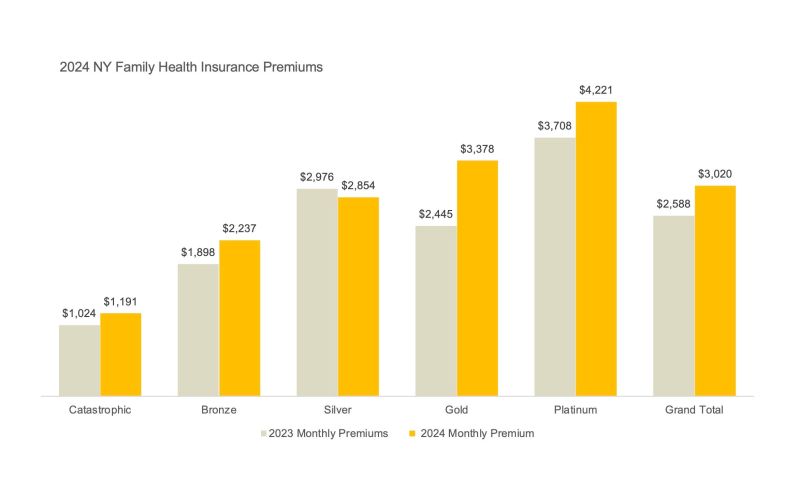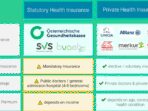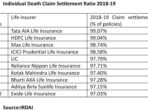Insurance Premium Data – The average property insurance premiums have increased by more than 30 percent since 2020, and there is a great variety after the site. The installments have increased more for homeowners in areas with the highest risk of natural disasters such as hurricanes or forest fires.
Although insurance premiums have always been higher in the most dangerous places, the relationship between disasters and installments has become stronger over time. If the trends found in natural disasters continue, the insurance premiums are likely to continue in height.
Insurance Premium Data

The main factor behind the high prices facing homeowners is a rapid increase in reinsurance levels, according to Benjamin C. Keys and Philippe Mold in property insurance and disasterless: New proof of data on mortgage guarantee (work document 32579). Insurance companies buy reinsurance to protect from one or more disasters that dry their origin.
My Insurance Dost
Researchers study insurance prices operating programs by analyzing data on guarantee payments. Most mortgage holders make monthly payments to calculate the guarantee covering the mortgage head and the benefits, local property taxes and homeowners. By isolating the insurance part of these payments, researchers were able to create a group of data with more than 47 million notes on the costs of insurance in the US between 2014 and 2023.
Between 2020 and 2023, the average housing insurance costs increased from $ 1, 902 to $ 2, 530 – 13 percent height once an enlarged adjustment. But in postal codes with the highest disaster risk, the increases were much greater. Neither the changes in the values of the home nor changes in the state’s regulations or other factors can explain this conclusion. In 2018, increased standard deviation 1 resulted in disasterlessness in the postal code in an average part of about $ 300. By 2023, the increase was about $ 500. More than a quarter of the high costs to secure modified homeowners who have been modified by this height can be explained in the risk bonus.
Rising risk payments coincide with the double reinsurance costs in the US and reinsurance between 2018 and 2023. The researchers call this “reinsurance shock”. This is the main cause of high homeowners insurance prices, but their effects also differ between websites. Take the border provinces between Florida and Georgia along the Atlantic coast, where communities risk hurricanes regardless of the limit they are. In Florida, specialized insurance companies dominate the housing market and rely on reinsurance to cover almost 40 percent of the state’s property. In Georgia, on the other hand, national transport companies play a greater role and rely on reinsurance of less than 10 percent of the property in that state. This may explain the cause of the increase in inflation premiums that were modified in some coastal province in northeastern Florida by about $ 1,000 between 2018 and 2023, while in nearby and similar provinces in the coast Georgia increased by less than $ 500.
Researchers note that high reinsurance degrees may be due to a number of factors, including the migration of the United States against increasingly risky areas, the end of a low interval environment and “climate diving” where their future re -exposure is evaluated in the light of the increasing climate risk. They also point out that if hard weather events become more common, reinforcement shock can continue and reinforce them.
February Life Insurance Premiums Drop 12%; Private Insurers Grow 3%
Researchers thank the Wharton ESG -Initiative’s research fund, ESG Certiative Climate Center and the research sponsors for Zell/Lurie Real Estate Center for Support.
In addition to the spreadsheet, the results that their subsidiaries are facing through a group of free patrols – correspondent, digestion, brochure related to pension and disability, health -related brochures and bulletin on our website about our use of our use in entrepreneurship, in addition to the online, and video agreement conference reports. Learn more
Mirror, Mirror 2024 is your opportunity to explore the effects of political alternatives on health and luxury in ten countries, including the United States reads the report here.

After more than a decade of the passage of the Sponsorship Act at reasonable prices (ACA), the health insurance cover for employers remains the backbone of health insurance in the United States, where more than half of Americans under 65 – about 163 million people.
Analysis Of 2015 Premium Changes In The Affordable Care Act’s Health Insurance Marketplaces
Among those who lost function -based coverage, fewer dismay compared to the previous recession. This is because ACA market subsidies and expansion of Medicaid authorization provided a security network for those who do not have access to another entrepreneur or Cobra.
The main question for many workers and their families is the ability to bear the costs of their excellent contributions and protect the costs provided by the employer’s health plan, including the size of their discounts. Focusing on people with average income registered in the employer’s plans, we studied the latest information from the federal medical examination component to answer these questions
Over the past decade, excellent contributions and discounts of the employer’s plans are an increasing proportion of workers’ income. These costs accounted for 11.6 percent of the average family income in the United States in 2020, an increase of 9.1 percent in 2010 (Table 1).
On average, the employee’s share of the cost of the premium of 6.9 percent of the average income in 2020 increased. This increased from 5.8 percent in 2010, although the proportion has largely been established since 2017.
P&c Insurance Companies: Financial Investment Guide
The average discount for a medium family reached 4.7 percent of their income. In 2010, this proportion was 3.3 percent.
Excellent grants and discounts represent 10 percent or more than average family income in 37 states 2020, an increase of 10 states 2010 (Table 1). In Mississippi and New Mexico, workers met in the middle of the distribution of income the highest possible costs for income (19.0 % and 18.1 % respectively).
Add together, the average total cost of installments and potential expenses for individual insurance and the family increased to $ 8, 070 2020 (Table 2). This extended from a reduction of $ 6, 528 in Hawaii to the top of $ 9,000 in Florida, Kansas, Missouri, South Dakota and Texas.

By 2020, US workers were registered in the employer’s coverage to pay about 21 percent of their total installment for individual coverage (Table 3). This reached an average of $ 1, 532 at national level and varied between $ 852 in Hawaii to 1, 895 in South Carolina (Table 4A).
Nine Star Group
Workers in family plans pay a fairly larger proportion than their premium: 29 percent on average (Table 3). But in four states (Florida, Louisiana, Mississippi and Nevada), the workers were responsible for 37 percent or more of their family premium. These percentages were translated into $ 5, 978 at national level and varied between $ 4, 610 in Washington to $ 7, 674 in Florida (Table 4B).
Excellent contributions were more than 8.5 percent of the average income in Florida, Louisiana, Mississippi, Nevada, New Mexico, Aklahoma, South Carolina and Tixas. It was 12.7 percent in Mississippi (Table 1). In 2010, in only one state, Mississippi, people with average income spent much of their home profits on the company’s payments.
Workers in companies with low salary contributed to a larger proportion of their total premium to cover the family, and thus on average the amount of the largest dollar from workers in medium -sized wages higher. This difference was also clear to cover the individual (data not offered). While workers in small companies, on average, contribute to a larger proportion of family plan payments of workers in large companies, other research indicates that this pattern is clear in both small and large companies.
Although many workers pay high payments for their income, they also have good discounts. Research indicates that high discounts can act as an economic barrier, which inhibits people with modest income by obtaining the necessary services.
Age And Motor Insurance
By 2020, the average discount for individual policy was $ 1 and $ 945 and varied up to $ 2, 517 in Montana (Table 5).
The Commonwealth Fund tracks the proportion of people with health coverage, which means that their plan does not provide sufficient protection against high costs and discounts, with the exception of installments.
The opponent, who represents 5 percent or more family income, is one of our thresholds for insurance.
In almost half of the states, people met in the medium term for the distribution of income medium discounts that were left by non -confidence in 2020. In 2010, workers in only one state met opponents.
How Affordability Of Employer Coverage Varies By Family Income
The highest average discount for average income by 2020 was 7.4 percent, in New Mexico (Table 1).
The increasing cost of health insurance for the employer is driven by growth in healthcare expenditure. New data from the Health Care Institute shows that expenses for each person in the employer’s plans have grown by about 22 percent during the period 2015 to 2019, which exceeds both inflation and economic growth.
The prices led by health care providers and pharmaceutical companies were the main engine, which represented almost two -thirds of total expenditure growth.
These high prices are the main reason behind the growth of the amount that the workers pay against their installments and discounts over time. Since income has not been accompanied, health insurance is dealer with a larger and larger proportion of family budgets. It is more than clay, that workers make wage concessions to the benefits of the company that often cover







